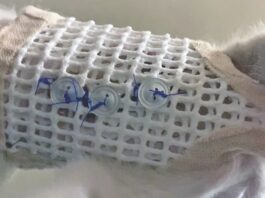12 Signs of a Medical Emergency
When your cat suddenly becomes ill or injured, how do you determine if he needs to go to the veterinarian or emergency hospital - STAT? Its not always easy to tell. Hiding illness is a natural instinct for cats because of their evolution as both prey and predator. Theyre hard-wired to cloak weakness and may exhibit only subtle signs that theyre seriously sick.
Free Reign of the House and Stem Cell Research
A survey of more than 10,000 pet owners in 11 countries - 3,100 of them in the U.S. - has found that U.S. owners are the most passionate about their cats. In addition to the U.S., the renovation and design firm Houzz asked owners about pets in the home in Canada, France, Italy, Spain, Sweden, Denmark, Russia, Germany, Australia and Japan. Veterinarians frequently prescribe therapeutic diets and daily medication for cats with chronic enteropathy, a condition characterized by excessive loss of plasma proteins into the gastrointestinal tract. However, the regimen can have side effects, and some owners have difficulty complying with it.
Managing Diabetes Requires Dedication, but Long Life Is Possible
Q: My 11-year-old male domestic shorthaired cat has just been diagnosed with diabetes. I am feeling overwhelmed by the prospect of managing this condition and concerned for his well-being. Can you tell me a bit about this condition, his prognosis and how it can be managed?
Anesthesia Today: Safer Than Ever
You may be hard-pressed to find scientific studies on this, but anecdotal evidence abounds at veterinary clinics: When owners learn their cat needs a dental cleaning, a lay term for periodontal treatment, most of them are alarmed - specifically about the risks of anesthesia. Some even delay treatment because of their concern.
Cats and Anesthesia
I am the proud mother of a middle-aged cat who requires extraction of two molars because of resorptive lesions [a painful disease in which resorption destroys the teeth]. I am very concerned about the anesthesia required for this extraction, and I wanted to ask if you can provide some insight regarding how best to assure that he is treated safely during this procedure.
Diagnosing with Doppler and Avoiding ‘White Coat Syndrome’
Veterinarians commonly diagnose hypertension with a Doppler system that detects blood flow acoustically. This method uses an inflatable cuff with a gauge that measures pressure within it, a stethoscope and a unit that uses Doppler signals to detect blood flow. The veterinarian or technician places the cuff around a limb, inflates it until blood blood flow in the limb is blocked and then gradually deflates the cuff until blood flow is detected once again. …
Keeping 15-Year Old Chelsea Pain Free Around The Clock
When Eileen Marek of Sherman Oaks, Calif., was referred to a specialist after her 15-year-old cat Chelsea was diagnosed with bone cancer of the jaw, she expected the worst. I was thinking I would have two choices, she says, surgery or put her to sleep. I was pretty stressed going into that appointment.
Study Investigates Stem Cell’s Role in Healing
Studies on kidney disease at Colorado State are focusing on whether stem cells can reduce kidney inflammation in cats. Any cat over 10 is likely to develop kidney disease, and by age 15, Im generally very surprised if it hasnt, says researcher Jessica Quimby, DVM, Ph.D., ACVIM.
Reducing the Risk of Lymphoma
Lymphoma is the most common form of cancer in cats and unfortunately one of the most deadly. Although it has no cure, vaccinations against two viruses linked to the cancer can reduce your cats risk of developing the disease.Feline lymphomasarcoma is a malignant cancer of lymphocytes, cells in the immune system that travel the body through the lymphatic system - the network of tissues and organs that influences virtually every aspect of a cats health. Lymphoma can arise in lymph nodes as well as organs, including the spleen, liver, intestinal tract and skin. The disease can sometimes lead to tumors; however, the cancer usually involves the blood-forming organs and lymph tissue.
Multiple Organs Can Be Affected
Symptoms of lymphoma vary, depending upon the part of the body affected. In some cats, the disease is multi-centric, meaning that multiple organs are affected. This type of cancer tends to strike middle-aged and older cats who are usually not infected with FeLV. In cases of more localized lymphomas, the affected sites and their symptoms include:
Three Common Myths About Spay and Neuter
Some reasons to avoid spaying or neutering pets are based on misinformation, including:
Dont Use First Aid on Snakebites
If youre out for a stroll with your cat in your fenced backyard and he suffers a snakebite, his life can quickly be in danger. The safest course: Dont attempt outdated first-aid measures such as application of a tourniquet or incision to remove the venom with suction. It will already have been absorbed, and tourniquets can compromise blood circulation, causing severe injury.













